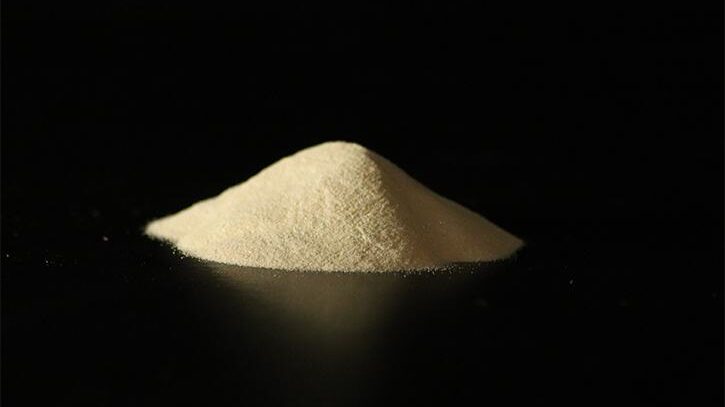Key raw material for solid electrolytes—Zirconia

ZrO2 is an oxide material with high temperature resistance, high hardness and good chemical stability. It has high melting point and boiling point, so it can maintain stable physical and chemical properties in high temperature environment. In addition, ZrO2 also has a low thermal expansion coefficient and good electrical insulation properties. This makes it one of the preferred raw materials for LLZO solid electrolyte.
High hardness: The hardness of ZrO2 is second only to diamond, and it has high wear resistance.
High melting point: The melting point of ZrO2 is very high (2715℃). The high melting point and chemical inertness make ZrO2 a good refractory material.
Excellent chemical stability: ZrO2 has good resistance to chemicals such as acids and alkalis and is not easily corroded.
Good thermal stability: ZrO2 can still maintain good mechanical properties and chemical stability at high temperatures.
Relatively large strength and toughness: ZrO2, as a ceramic material, has a large strength (up to 1500MPa). Although the toughness is far behind some metals, compared with other ceramic materials, zirconium oxide has a higher fracture toughness and can resist external impact and stress to a certain extent.
There are various preparation processes for ZrO2, including pyrolysis, sol-gel, vapor deposition, etc. Among them, pyrolysis is one of the most commonly used preparation methods. This method reacts zircon and other raw materials with alkali metal or alkaline earth metal oxides at high temperature to generate zirconate, and then obtains ZrO2 powder through acid washing, filtration, drying and other steps. In addition, the performance of ZrO2 can be regulated by doping different elements to meet the needs of different solid-state batteries.
The application of ZrO2 in solid-state batteries is mainly reflected in oxide solid electrolytes, such as lithium lanthanum zirconium oxide (LLZO) and lithium lanthanum zirconium titanium oxide (LLZTO), which exist in garnet-type crystal structures. In these solid electrolytes, ZrO2 occupies a very important proportion. For example, in the mass of LLZO before sintering, ZrO2 accounts for about 25%. In addition, in order to reduce the interface resistance in solid-state batteries and improve the efficiency of lithium ion migration, the positive and negative electrode materials usually need to be coated with materials such as LLZO. At the same time, oxide semi-solid batteries also need to construct a layer of ceramic diaphragm composed of materials such as LLZO, which further increases the amount of ZrO2 used in solid-state batteries.
With the continuous development of solid-state battery technology and the expansion of its application fields, the demand for ZrO2 as a solid electrolyte raw material will continue to grow. In the future, ZrO2 is expected to play a more important role in the field of solid-state batteries by further optimizing the preparation process, regulating performance and reducing costs. At the same time, with the continuous emergence of new solid-state electrolyte materials, ZrO2 will also face more intense competition and challenges. However, with its unique properties and broad application prospects, ZrO2 will still have an irreplaceable position in the field of solid-state batteries.
